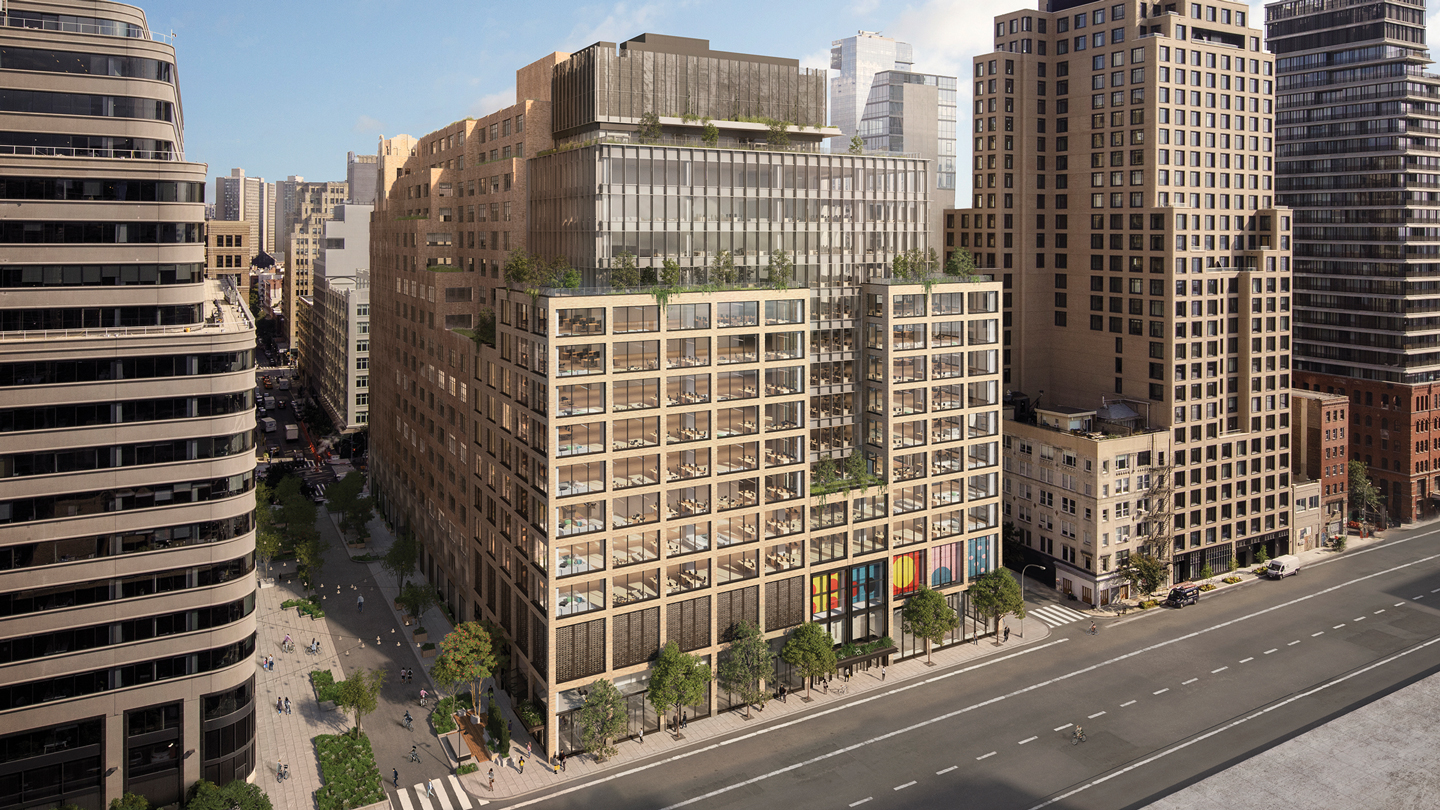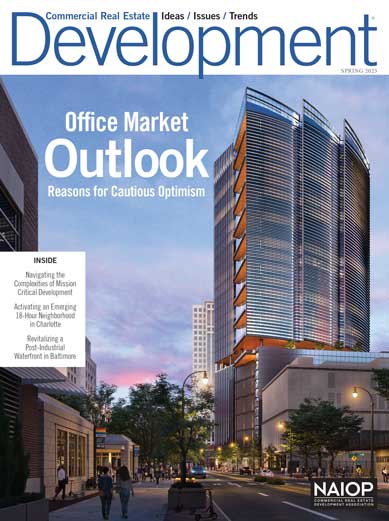Fall 2023 Issue
The Logistics Building of the Future
By: Matt BradyA new prototype aims to solve the challenge of putting industrial facilities in dense urban areas where land supplies are constrained.
‘We Cannot Allow the Best to Overwhelm the Good’: A Conversation with Joel Kotkin
By: Gerard C.S. Mildner and Trey BarrineauThe author sees suburbs as the best location for nurturing the aspirations of the middle class.
Seattle Draws Cheers for a Daring Stadium Renovation
By: Anthony PalettaThe three-year makeover of Climate Pledge Arena involved complex planning and breathtaking engineering.
Must-Read Articles

Revitalization and Revenue: Office Conversions as a Way to Rebuild Cities

Facility Managers Must Prepare for an All-Electric Future

CEO on Leadership: Andrew VanHorn

The Flight to Cool Leads the Future of Work

How to Navigate Risk and Maximize Returns When Investing in Distressed Real Estate

Developers Can Cash Out Tax Credits for Renewable Improvements

The Future of Electric Vehicle Charging: A Guide for Commercial Real Estate Developers

Supreme Court WOTUS Ruling Clarifies, Limits Federal Jurisdiction Over Wetlands
ADDITIONAL ARTICLES
Download the Fall 2023 Issue of Development
Download a PDF version of the Fall 2023 Issue of Development.
Construction Cost Challenges Shift from Materials to Labor
A limited supply of experienced workers pushes wages higher.
Six Strategies to Help Retailers in the Site-Selection Process
First-hand observations and in-depth market knowledge can make a difference.
The Benefits of Insulated Metal Panels for Cold Storage Facilities
These versatile products have become the industry standard for refrigerated warehouses.
Siphonic Roof Drains Can Move Water More Efficiently
These systems harness the power of the siphon effect, which can reduce costs and increase design flexibility on projects.
What Does EPA’s Proposed PFAS Regulation Mean for Commercial Real Estate?
A new designation for certain chemicals regulated by the Superfund law could impact property transactions.
New & Noteworthy Projects
An assortment of brief facts and figures about new and noteworthy development projects.
Report Highlights Approaches to Wellness in Distribution Centers
Healthy, safe working environments are critical for attracting and retaining employees.
PERSPECTIVES
NAIOP Awards Diversity Student Scholarships
Six graduate and undergraduate students from backgrounds traditionally under-represented in the commercial real estate industry received the honor.
Trends and Conversations: What I’m Hearing During Chapter Visits
Since becoming NAIOP’s 2023 chair in January, it’s been my pleasure to visit chapters from Orlando to Milwaukee to Southern California.
From the Editor: As the Economy Improves, What’s Next for CRE?
As of this summer, it appears that the Fed may have engineered a soft landing for the U.S. economy.
ARCHIVED ISSUES
View All Archived Issues Summer 2025 Issue
Summer 2025 Issue
Development’s summer 2025 issue explores experiential retail and the brick-and-mortar resurgence. Also featured: a modern warehouse campus in Toronto that honors its manufacturing heritage; a coalition of Oregon real estate organizations working to revitalize downtown Portland; and the creative capital stack strategy behind a mixed-use project in West Baltimore.
 Spring 2025 Issue
Spring 2025 Issue
The spring 2025 issue offers insights about where the office market might be heading over the coming year, explores the complexities of mission critical development, and provides detailed looks at two transformative mixed-use projects: The Bowl at Ballantyne in Charlotte and Baltimore Peninsula in Maryland.
 Winter 2024/2025 Issue
Winter 2024/2025 Issue
Development magazine’s winter issue delves into the evolving uses of artificial intelligence in the commercial real estate industry, from lease management and building operations to portfolio assessment and data analysis.
















